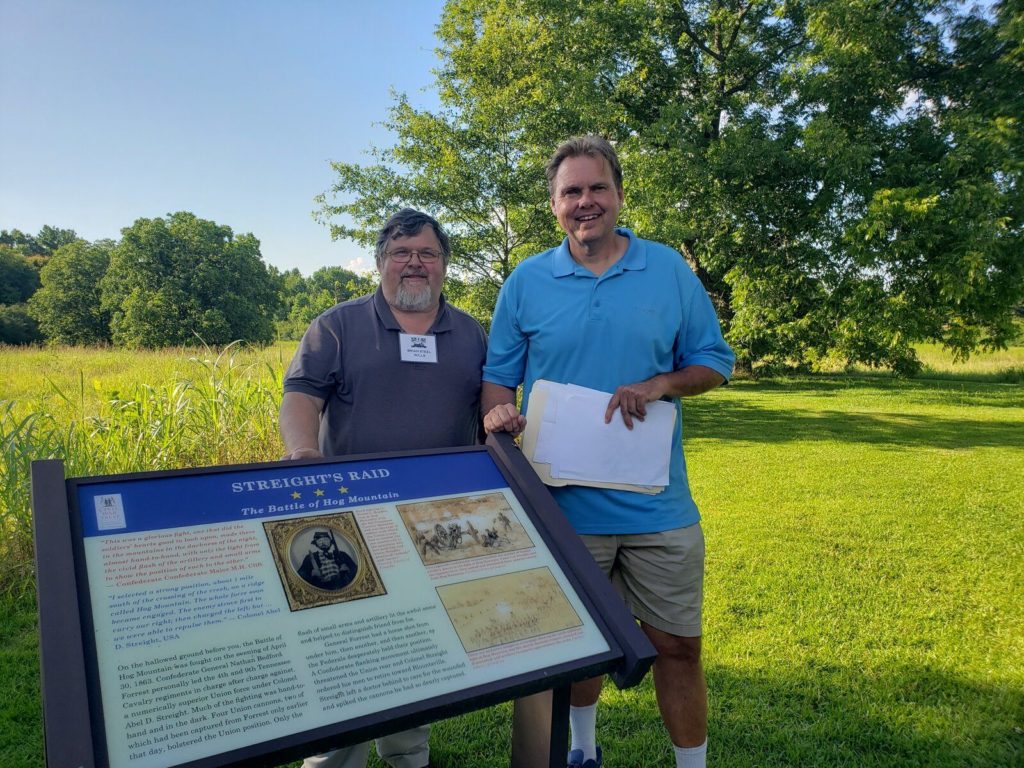
Over the weekend of June 25 to 27, 2021, I had the opportunity to join Dr. Brian Steel Wills and Norman Dasinger, Jr. for Blue & Gray Education Society’s tour of Streight’s Raid, from Eastport, Mississippi to Cedar Bluff, Alabama. It was my first time to join a BGES tour and it was an amazing learning experience!
The event began on Friday night at the host hotel with an introduction to the tour leaders, the characters, and the campaign. Since I live nearby, I arrived just as the introduction got underway. The tour leaders and attendees were so welcoming and, even though I was the only woman in the group, I felt comfortable right away.
The guides explained the objectives of the campaign: reach Rome, Georgia; disrupt the Western and Atlantic Railroad; and interfere with manufacturing at Rome. Dr. Wills knows Nathan Bedford Forrest inside and out; Norman knows the engagements, the geography, and the stories. They joked that “Norman knows the land and Dr. Wills knows the man.” The two of them combined to provide fantastic and unique perspectives on the events of the campaign. Being a local, I already knew a good bit about Streight’s Raid, but I had a number of “AHA! moments.” The perspectives provided by the guides added to my overall understanding of the campaign.
Day One
On Saturday morning, we departed the host hotel in two very nice (and surprisingly comfortable) mini-buses. I was in the van with Dr. Wills, and Mr. Dasinger rode in the other van. After lunch, our guides switched vans so Dr. Wills could share insight on Forrest with the people in the other van and Norman could share geography with us. It was a good plan that allowed all the attendees to experience the expertise of each guide. We drove to the General Joseph Wheeler House, near Courtland, Alabama. Mr. Dasinger gave a brief history of the house; its descent through the Wheeler family; and its donation to the State of Alabama by Annie Wheeler, Joe Wheeler’s granddaughter. We reloaded the buses and continued on to Eastport, Mississippi.

Although I had read about the landing of Streight’s men and mules at Eastport and the disasters that followed, I had never been there. The town of Eastport is gone now—under the waters of the Tennessee River. Mr. Dasinger showed us the April 1863 location of the corral on a hill [behind the camera position] where Streight offloaded about 400 mules. Here, some local residents threw two hornet nests, two wildcats, and a jar full of yellow jackets into the corral, resulting in the drowning of half of the mules and the stampede of 200 others. It took two days to find the mules that ran away.
After the stop at Eastport, we followed Streight’s men and mules back into Alabama. Once back in Alabama, we picked up the “old road” and followed it to Big Bear Creek, just across the state line. From here, we could see the bridge where Abel D. Streight met Grenville Dodge to announce that he (Streight) had (finally) arrived and the campaign could begin. I live in Alabama and had no idea this was a place of interest, let alone that it could be viewed today. At this stop, Mr. Dasinger reviewed the objectives of the campaign and likened Streight to a “quarterback” in this adventure while Dodge was “blocking” for him. Dr. Wills picked up further on that theme and said it was “Streight’s dance.” Analogies like these, provided throughout the tour, were entertaining and engaging, but also helped clarify the intent and roles of the various forces in the campaign.
We reloaded the buses and headed to Town Creek, Alabama. Unfortunately, the marker there has been damaged, but the intent is not lost. This Battle of Town Creek, Alabama, marked the end of Grenville Dodge’s screening activity. As Streight headed south through Russelville, intent on Rome, Georgia, Dodge and his men engaged Nathan Bedford Forrest and Phillip Dale Roddey’s (with an “e”) Confederate Cavalry here at Town Creek, hoping to give Streight a head start. The diversion did not delay Forrest as long as had been hoped, but Dodge felt his mission was accomplished and he headed back towards Iuka, Mississippi. Our next stop was Courtland, Alabama, where I snapped a group picture.
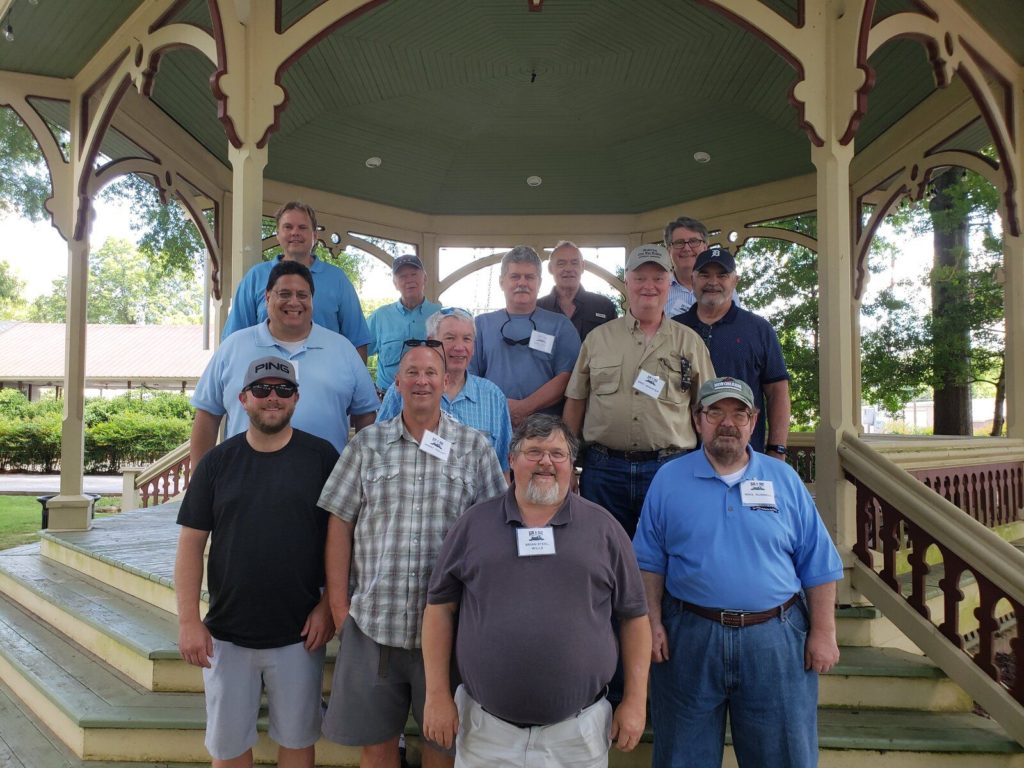
The night of April 29, 1863, Streight and his men camped at the Day Farm, and the Battle of Day’s Gap occurred the next day. Besides Day’s Gap, there were other gaps on the mountain face. Streight was concerned that Forrest’s Confederate cavalry might use other gaps to outflank his men as they passed through the steep and narrow trail of Day’s Gap. Turns out Streight was right, and the engagement commenced before all the Federals had even left the Day Farm.
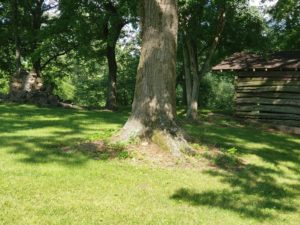
While we were stopped in front of the Day Farm, the owner noticed the vans out on the gravel road in front of his house and came out to see what was going in. Once Mr. Dasinger explained, the owner invited us into the farm to see the location of a field hospital that was on the property during the battle. The rock chimney in the photo (right) marks the spot where Union surgeons treated wounded Federals and Confederates. Most people know that Dr. William Spencer (Surgeon, 73rd Indiana) was left behind to tend the wounded at a field hospital. Henry R King (Asst. Surgeon, 51st Indiana) was captured on the field and also “sent back to Day’s Gap” as a prisoner. These two surgeons most likely treated the wounded at the field hospital at the Day Farm. Those wounded likely included William Forrest, brother of Nathan Bedford Forrest, who was badly wounded in the leg early in the Battle of Day’s Gap. We also saw the Day Family cemetery, and the owner pointed out the graves of six soldiers, marked by fieldstones, who died at the field hospital and were buried in the Day Family cemetery.
From Day’s Gap, we proceeded to Hog Mountain, where the American Battlefield Trust has recently acquired property to interpret the Battle of Hog Mountain. It was easy to see the terrain and interpret the movements here and Mr. Dasinger provided primary source accounts from both sides that helped our understanding of what happened there.
Day Two
Day two of the Streight’s Raid tour began with a drive from the host hotel in Gadsden to Blountsville, Alabama, to pick up the trail of Streight’s mule brigade. At Blountsville, Streight ordered the burning of the wagons that had tended to slow his progress somewhat. Here, we learned that Streight’s men had not yet realized the futility of their mission. At this point, they were still optimistic that they could reach Rome, disrupt the Western and Atlantic Railroad, and interfere with manufacturing at Rome. A short distance from Blountsville, Streight’s men encountered the Locust Fork of the Black Warrior River. Forrest chose not to press very hard as Streight’s men made the difficult crossing, which allowed the Federals time to rest and forage for food.
At Walnut Grove, Alabama, we stopped at the place where Forrest and his men encamped on the night of May 1, 1863. Streight wasn’t far ahead, and it was here that Forrest’s harassment of Streight became relentless. Sending small groups ahead to harass Streight’s rear, Forrest kept the pressure on all night. Streight and his men got little, if any, sleep the night of May 1. We had a little fun here as Dr. Wills decided to imitate Norman’s enthusiastic hand gestures.
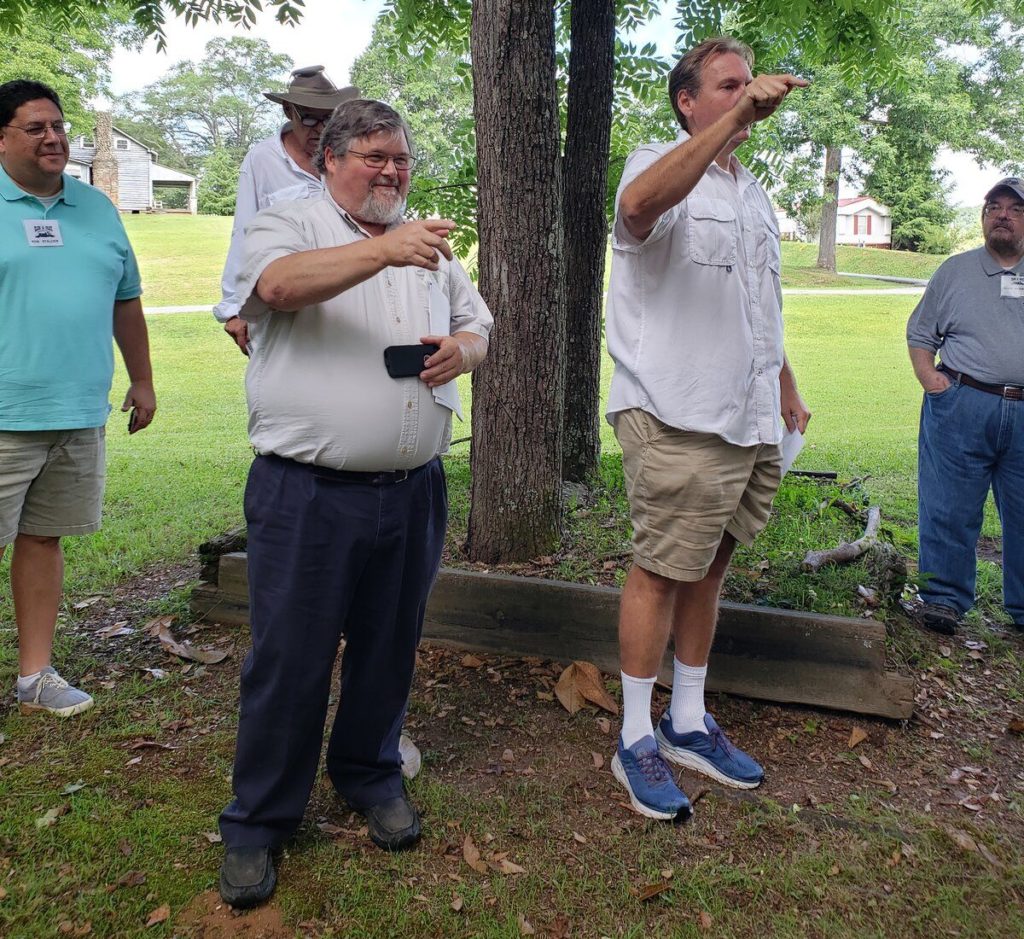
After a stop for lunch, we pressed on. Some of the best stops were yet to come. At the site of the Sansom home in Gadsden, Alabama, Mr. Dasinger explained the Emma Sansom and Nathan Bedford Forrest incident. Forrest rode up to the house, asking if there was an alternate route that would allow him to avoid the bridge across Black Creek which had just been torched by Streight’s men. Fifteen-year-old Emma volunteered to show Forrest the ford and the hidden route to access it. He swung her up behind him on the horse and as they approached the ford where Streight’s men were just yards away. Forrest positioned Emma behind him, refusing to “make breastworks of her.” Then it was on to the famous Emma Sansom ford. From the Sansom house, traveling around to the west and behind a small knoll, Emma showed Forrest a depression. This ditch comes around the small knoll all the way to Black Creek and allowed them to approach the ford without being seen. I’ve been to the site lots of times before, but this time, I crawled down into the ditch to obtain the best photo.
Then it was over to Broad Street in downtown Gadsden where we viewed the Emma Sansom monument still standing in the median but only by a hair’s breadth, after a five-to-four vote of the City Council to keep it last year. Here we also learned of John Henry Wisdom, known locally as the Paul Revere of the South. Returning to find his ferry sunk in the Coosa River, Wisdom shouted across to ask what happened. The person on the Gadsden side of the river said that Yankees were headed to Rome, Georgia, followed by Confederate Cavalry. John Henry Wisdom’s mother lived in Rome. Swapping horses as he went, Wisdom rode 67 miles as fast as he could to warn the people of Rome that Streight was on the way with the intent to destroy the city. Wisdom arrived in time to inform the military commander, who gathered up all the old men and boys in town, positioned a couple of old War of 1812 cannon, and stacked cotton bales on the bridges leading into the city. It was enough to make it appear that Rome was fortified and that would factor into Streight’s decision the next day.
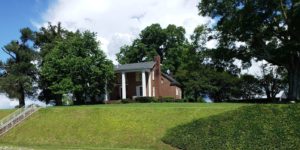
Our next stop was the Blount Plantation. It’s not something most people see. Although it is easy to find, most don’t know that they are looking at it. The engagement at the Blount Plantation on May 2, 1863, was disastrous for Streight. In crossing Big Wills Creek, powder had gotten wet. The men had not slept for days and were dead on their feet. To make matters worse, just south of here, a trap that had been laid for Forrest’s men was a failure. Col. Gilbert Hathaway—Streight’s right-hand man, the gallant and brave commander of the 73rd Indiana—was killed by a sharpshooter’s bullet fired from half a mile away. John A Frazier, Chaplain of the 73rd Indiana, wrote to Mrs. Hathaway to inform her of her husband’s death:
…It is with much regret I seat myself to write you to inform you of the death of your husband, Col. Gilbert Hathaway, although you may have heard of it before this time through some other source. He was shot in the battle on the 2nd of May about three o’clock in the afternoon. I was not present when he was shot, but was with him as soon as I could get there. When I got to him he was not quite dead, but could not say anything. I helped to carry him into a house where I closed his eyes in death. I took all his effects from his pockets and when I had got done, my hands were covered in his blood. He was shot a little to the right of the centre of his breast, the ball going through his lung. He died very easily, without a struggle. … His death was felt through the whole brigade and his regiment felt that they had lost all that was dear. … There was no one so brave. … I loved him as a Christian and a warrior. He was too brave. …
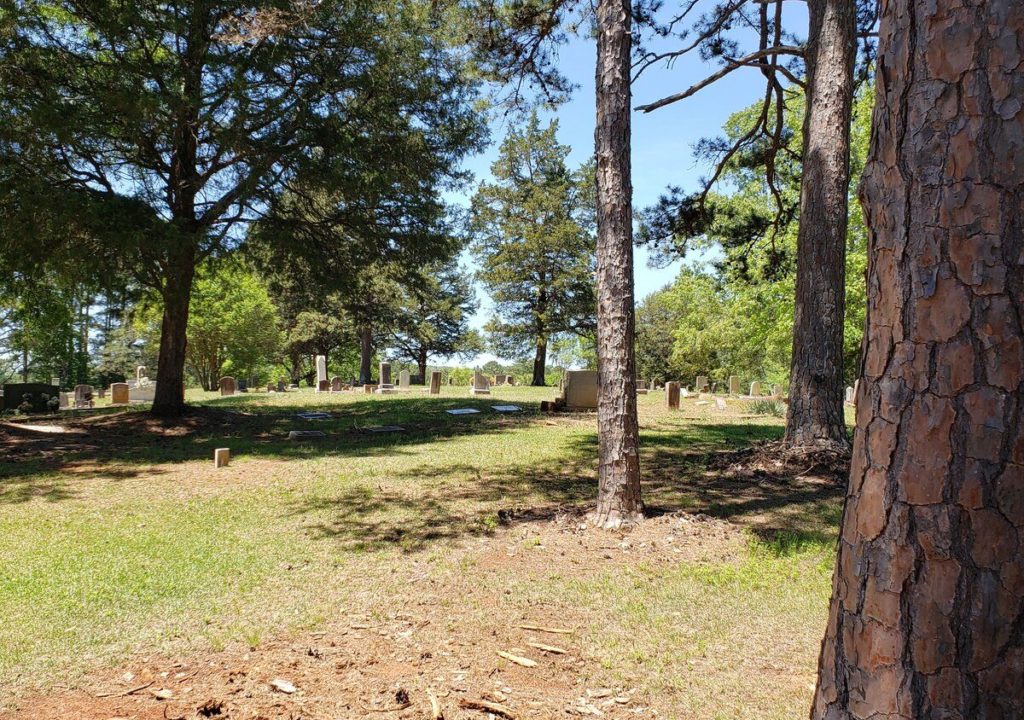
From the Blount Plantation, we traveled on to Cedar Bluff, Alabama. Along the way, Streight’s brigade became disoriented in an area of creeks, coaling, and cutover around the Round Mountain Ironworks. On the morning of May 3, 1863, as Colonel Streight enjoyed breakfast at the Lawrence Farm near Cedar Bluff, Alabama, the mule brigade’s last bit of luck finally ran out. Streight met with Forrest here, on a knoll near the Lawrence Family Cemetery. As part of Forrest’s ruse, while the men conferred, Confederate couriers arrived, announcing the arrival of various commands who were not within 100 miles: “General Roddey wishes to know where you’d like him positioned?” and “Sir, General Wheeler reports that he is in position and wishes to know upon what signal he should launch his attack.” And so the ruse continued.
Streight watched in the background as the same two-gun section was altered, pulled by different teams, manned by soldiers in different uniforms, and paraded behind Forrest. As he watched, Streight finally exploded, “My God man! How many cannon do you have? I have counted 15 already!” To which Forrest calmly replied, “I reckon … that is all that has kept up.”
And so, on May 3, 1863, Streight’s Raid ended with the capitulation of about 1,500 members of Streight’s Mule Brigade to Forrest’s 400 or so cavalrymen, right there at the Lawrence Farm near Cedar Bluff, Alabama—just 24 miles from Streight’s end goal of Rome, Georgia.

Takeaways
My biggest takeaway from the tour was recognizing the shift in the morale of Streight’s brigade. That was something I hadn’t given much thought to before. Dr. Wills’ explanation of Forrest’s intuitive ability to make the “right decision at the right time” was also food for thought.
BGES did a fantastic job with this tour. First and foremost, they secured the best guides available to lead the tour. These guys Dr. Brian Steel Wills and Norman Dasinger, Jr. were top-notch and extremely knowledgeable. They genuinely wanted to share their knowledge with us and enjoyed working together. Each recognized the other’s strengths and they valued each other’s contributions. It was also a nice group of Civil War enthusiasts—people with common interests. These factors all combined to make the entire experience extraordinary. I highly recommend BGES tours to anyone who may be considering participating. Go ahead and sign up. You won’t be disappointed!
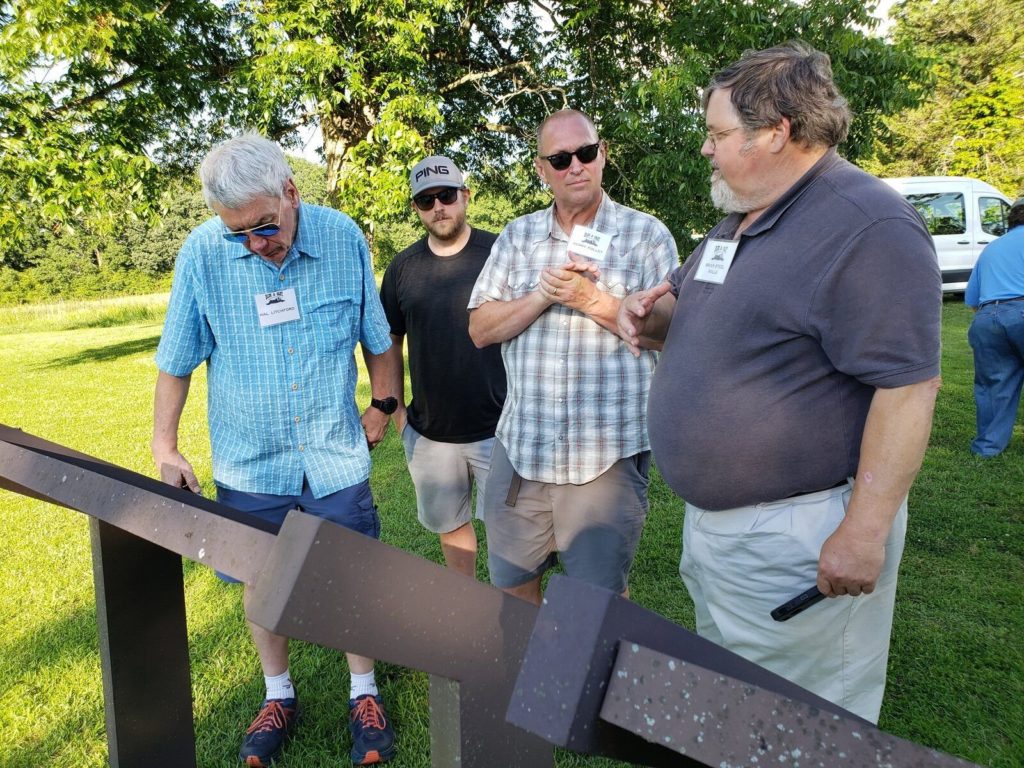



You must be logged in to post a comment.